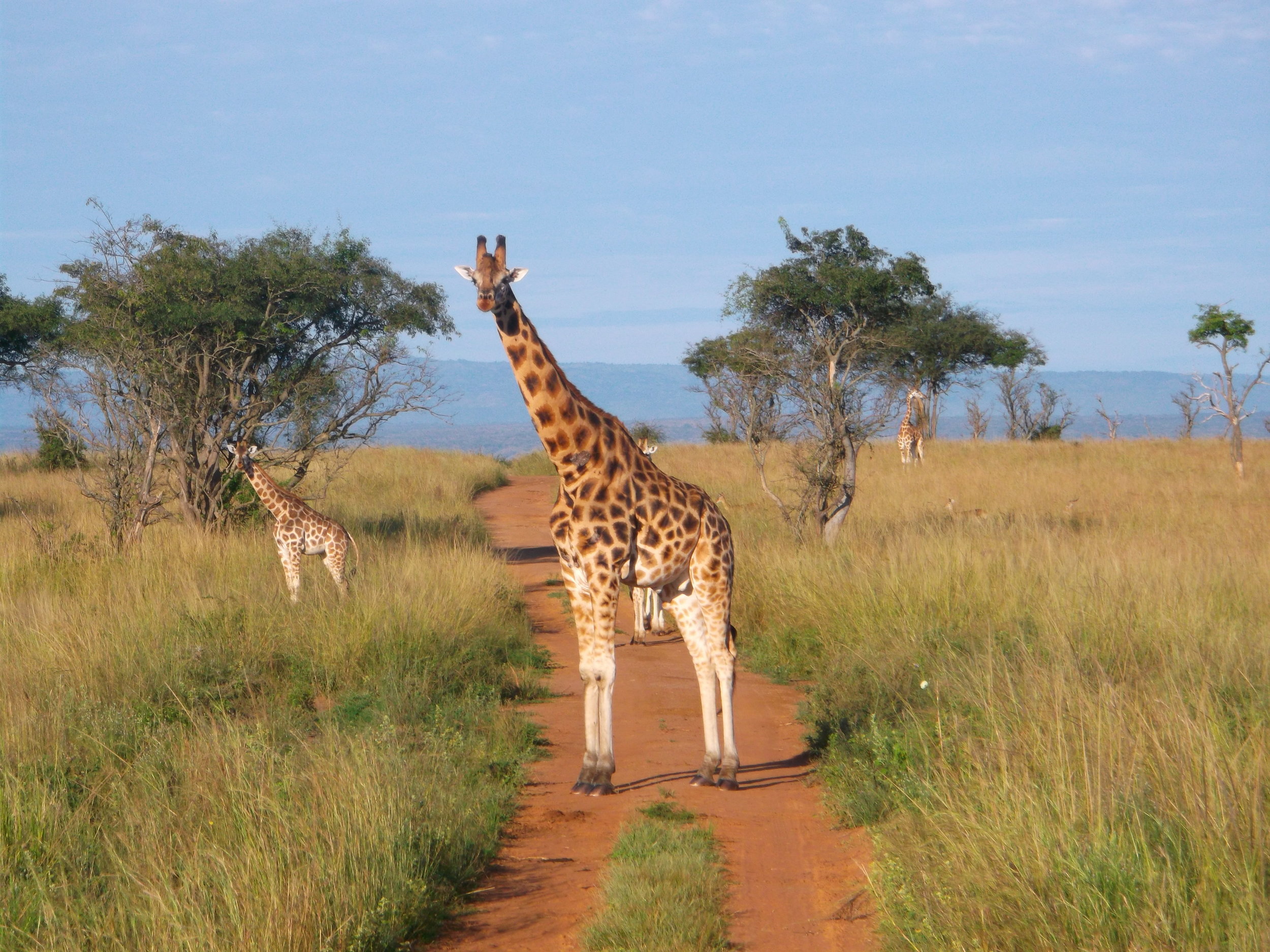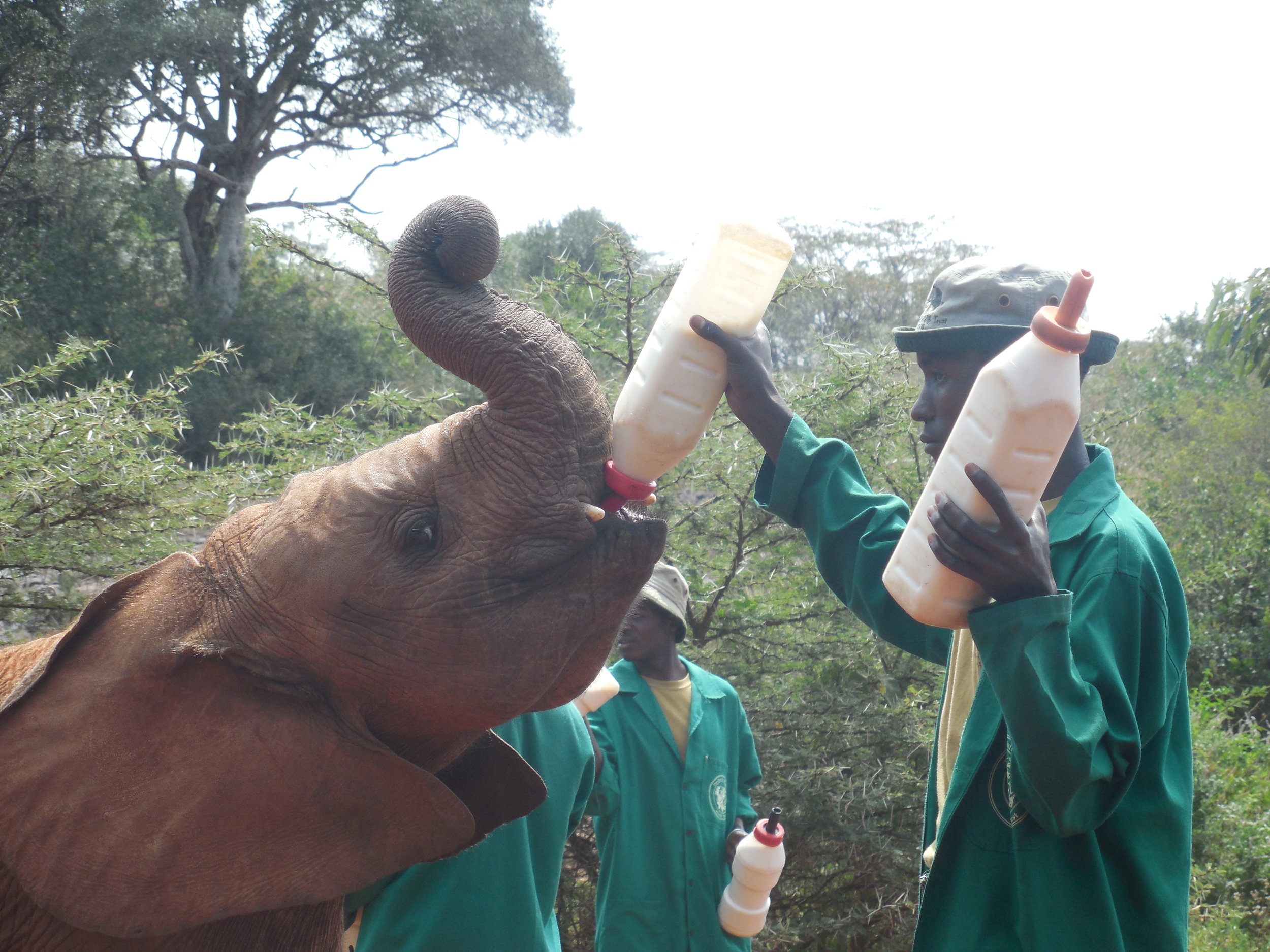I am always amused when I hear someone claim their’s is the “best approach” to Wildlife Conservation. As a Wildlife Conservationist, I adhere to the wholistic approach – everyone, every group, every method, who is striving toward the same goal of saving Endangered Animals, plays a vital role in Wildlife Conservation.
And, there are profoundly different approaches, all of whom should be cheered and lauded for their parts in helping save the Endangered Wildlife of Africa. Here are 9 of my favorites, with some new approaches making the list as well. Please feel free to put your favorite in the comment section!
Lodge Guard in Siana Conservancy, Overlooking Maasai Mara Game Reserve Kenya ©Flyga Twiga LLC
1- Boots on the Ground
With the increase in violent poaching in the past few decades, there has emerged groups of highly trained Counter or Anti-Poaching Units (APUs). Two such groups are Vetpaw and the Black Mamba APU. These highly trained “Boots on the Ground” APUs conduct Wildlife Conservation by going on the offensive against often highly armed, dangerous Criminal Poachers.
Vetpaw was founded by Ryan Tate with the idea of using his military experience. Mr. Tate’s group’s approach to Wildlife Conservation began after he “…interviewed his colleagues and saw the difficulties and frustrations of men and women who are highly skilled in combat-related areas, but unable to leverage those skills in a conventional civilian setting. They have a continuing dedication to serve others, and Ryan helps them channel it.”
The Black Mamba APU consists of 33 Women and 1 Man working in boundaries of the 52,000ha Balule Nature Reserve, which is part of the Greater Kruger National Park, South Africa. Their objectives include educating “…their communities to understand that the benefits are greater through rhino conservation rather than poaching, addressing the social and moral decay that is a product of the rhino poaching within their communities. They are concerned for their children’s sake as the false economy has brought loose morals and narcotics into their communities.”
Both groups offer back-up and assistance to the courageous Wildlife Rangers who put their lives on the line everyday to stop Poaching. Bravo to VetPaw and The Black Mambas!
Alpha Male Mgahinga Gorilla National Park, Uganda © Flyga Twiga LLC
2- Artificial Intelligence
One of the hottest, most exciting new developments in Wildlife Conservation is the use of Artificial Intelligence (AI). Headquartered in Washington, DC, the nonprofit RESOLVE's Biodiversity and Wildlife Solutions Program just announced its new TrailGuard AI.
Without getting too technical, the way this AI works is:
“TrailGuard AI is the first wildlife-oriented security camera system designed for the rigors of the bush that combines: easy concealment due to its small size (i.e. the length of one’s index finger), human detection algorithms performed on the Intel computer vision processing unit housed in the camera head, long battery life, and near-real time connectivity to alert rangers at park HQs to be able to make timely interventions.”
As my good friend Matt Thomas, who has long been interested in and studies AI says, ”AI is like any other major advancement in technology. We can use it for great evil or great good. It is our choice.” TrailGuard AI, and its ability to help Conserve African Wildlife, is most definitely for the greater good.
3- Activist Groups
Often giving the loudest “voice” to Conservation, Activists Groups play a central role in saving the Endangered African Wildlife. There are so many wonderful groups, I will highlight one whose work I have supported and who’s current Chief Operating Officer (CEO) is one of the Powerhouse Stars in African Wildlife Conservation.
WildlifeDirect (previously the Africa Conservation Fund) was founded in 2004 by the beloved conservationist, Dr. Richard Leakey, and former World Bank Representative to Kenya, Harold Wackman. With this great heritage, in 2008 Paula Kahumbu became CEO of WildlifeDirect. Under her Leadership, she has helped transform Conservation in Kenya. Through her work, WildlifeDirect playing an instrumental role in seeing the first ever, First Lady of an African Nation, adopt a Conservation Campaign. Through the “Hands Off Our Elephants” Ms Kahumbu’s WildlifeDirect has been a guiding force in changing the way Kenyans view Wildlife Conservation.
As the video above from the Nairobi 2015 “Global March for Elephants & Rhinos” shows, Activist Groups play a key role in having local communities become involved in Wildlife Conservation. I had the honor of attending and meeting Ms. Kahumbu in person and march with her during the rally. Again, each approach to Wildlife Conservation is like the Ecology itself, we all have a role to play.
Monkey and Baby ©Flyga Twiga LLC
4- Zoos
This may be a bit controversial. And, by Zoos, I mean modern-day, state-of-the-art, compassionate, well designed Zoos. I am of the opinion that Zoos are one of the Cornerstones of Wildlife Conservation. Aside from the great work they do to help protect animals, it is here, at the Zoo, where many children first learn about Wildlife. For some children, seeing a Giraffe, or an Elephant at the Zoo will spark a lifelong love of Wildlife, which I believe can lead to a passion for Conservation.
Additionally, a lot of people don’t know about the amazing work modern day, state-of-the-art Zoos are doing – beyond the gates of the Zoos. In fact, the Wildlife Conservation Society, founded in 1895, is actually the international branch of the New York Zoological Society/Bronx Zoo. I proudly say, I worked for one of the oldest Conservation Zoos in the World!
Kilimanjaro & Zebras, Amboseli National Park, Kenya ©Flyga Twiga LLC
5- Tourism
No surprise this one is near and dear to my heart. I truly, deeply believe that traveling to Africa and seeing the animals in the wild, is life changing. I have seen time and time again the shifts in perspectives, the transformational experience that is going on Safari in Africa. Having been blessed with a set of skills and knowledge, born from living and working in Africa, it seems natural to bond my passion for International Development and Wildlife Conservation through being part of the Tourism Community.
But, it isn’t just me who sees the hand-in-hand relationship to Travel and Conservation. Each year The Explorers Club, of which I am a Member, Lowell Thomas Award is given. Nicknamed “The World’s Foremost Globetrotter,” Mr. Thomas instilled a passion for exploration, and conservation, at a time when the world was “opening up.” Mr. Thomas was a Member of The Explorers Club as well, and I hope to instill the same love of Travel and Conservation to others, just as he did for so many in his time.
David Sheldrick Elephant Orphanage ©Flyga Twiga LLC
6- Animal Sanctuaries
There are so many wonderful Animals Sanctuaries, all over the world, doing amazingly awesome work in Wildlife Conservation. One of the best known is the David Sheldrick Wildlife Trust (DSWT). Founded in 1977, DSWT has become “…today the most successful orphan-elephant rescue and rehabilitation program in the world and one of the pioneering conservation organisations for wildlife and habitat protection in East Africa.”
While DSWT is committed to re-introducing orphaned elephants to the wild, my all-time favorite Animal Sanctuary, The Elephant Sanctuary, South Africa, takes in Elephants who cannot be re-introduced into the wild. Through positive reinforcement domestication, these Elephants live out their lives being Ambassadors for their highly Endangered Species.
By interacting, ethically, with these magnificent Ambassadors, visitors to the Elephant Sanctuary can learn more about the true nature of the Endangered Elephants. It was during my first visit to the Elephant Sanctuary South Africa, over 10 years ago, where a deep love for and desire to save African Wildlife began to encircle my heart.
Animal Sanctuaries, and especially those working with the highly Endangered Elephants, have an extremely important role to play in Wildlife Conservation.
Zebra Wildlife Warning Sign ©Flyga Twiga LLC
7- Animal Kingdom Parks
Much like Zoos, Animal Kingdom Parks have to be qualified. The Animal Kingdom Parks, of which I am speaking, offer safe “Safaris” and Wildlife Experiences. And, as with Zoos, I see these as highly beneficial for sparking an early interest in Wildlife Conservation in young children.
The best example I have of this is the experiences my friend Heidi Thomas (wife of aforementioned Matt Thomas!). Heidi & Matt have regularly taken their three children to experience Disney's Animal Kingdom Theme Park. Heidi has shared with me the true joys here children have gotten from their “Safaris.” I am not surprised honoring Walt Disney’s legacy with an Animal Kingdom Park. A little known fact, at the time of his death in 1966, Walt Disney had one of the largest African Mask Collections in the entire United States.
And, if Walt Disney’s and other Animal Kingdom Parks inspires future Wildlife Conservationists – I am all for them!
Amboseli Elephant Family, Kenya ©Flyga Twiga LLC
8- Writing
Often after a first Safari and seeing the African Wildlife in the wild, people often look for ways to share their soul changing experiences. Many also look for avenues to support and become part of Wildlife Conservation. One way of doing this is by writing a book.
For example, inspired by her first Safari, my Friend and Author, Mary Jane O'Loughlin, was inspired to write the book “Ruby and Baby an Unlikely Friendship.” It is through this book that she shares her love of African Wildlife while having a portion of the proceeds support, Amboseli Trust for Elephants.
Sharing her love for African Wildlife and supporting the Amboseli Elephants at the same time, Mary Jane greatly contributes to Wildlife Conservation!
Kait Hanson at Finch Hattons Luxury Camp, Kenya ©CommuniKait
9- Social Media Influencers
My favorite new way to approach Wildlife Conservation is Social Media Influencers using their Platforms. A unique, and extremely effective form of communication, these Influencers can reach a vast audience.
The perfect example of this is Social Media Influencer, Kait Hanson, of Communikait. Kait is a Lifestyle and Travel Blogger, Writer and Photographer. In addition to her exceptional Website & Blog, Communikait, Kait’s influence includes nearly 9,000 followers on Instagram. Her Communikait Facebook Page has over 3,000 Likes, and she has over 4,500 followers on Twitter. She rounds out her Social Media Powerhouse with 709.4k monthly viewers on Pinterest. That is a lot of Influence.
During her first Safari in Africa, Kait used her Social Media Platforms to showcase her Safari and the highly Endangered African Wildlife. Each of her posts had hundreds of Likes and Comments. For instance, her posts about seeing one of the last remaining Rhinos in the Wild, went out to her tens of thousands of followers. And, equally as important, to followers who may never been exposed to the realities of Endangered Animals and how close we are losing whole Species.
As a high-profile Social Media Influencer, Finch Hattons Luxury Tented Camp, asked Kait during her Safari to take over their Instagram Account. Located in Tsavo West National Park, Kenya, Finch Hattons astutely has realized the power of Infuencers in Social Media. And, they picked up numerous followers thanks to Kait’s Infuencer Status.
By using her powerful Social Media Influence, Kait is able to reach and educate a vast amount of people on the importance of saving Endangered African Wildlife. As one of the newest approaches to Wildlife Conservation – Kait’s contributions as a Social Media Influencer are the absolutely perfect Win-Win. A thousand cheers to Kait for all she does for Wildlife Conservation as a Social Media Influencer – Brava!
Amboseli Elephants, Kenya ©Flyga Twiga LLC











